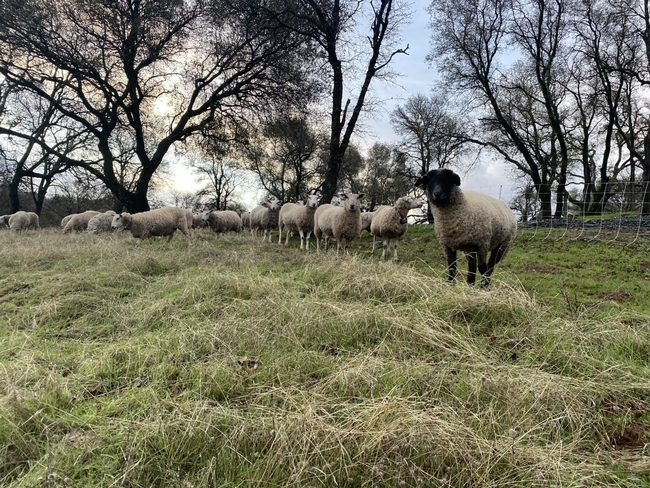After several multi-year droughts over the last decade, I find myself puzzled by the moisture that's been falling from the sky here in Auburn this winter! I find myself even more puzzled by the saturated state of our foothill soils! Over the last several weeks, as I've driven Highway 49 between Auburn and Sonora, I've seen creeks running that haven't flowed in the last several years. After years of worrying about drought and wildfire, I find myself worrying this year about flooding.
In the last two weeks here in Auburn, I've measured more than 11 inches of rain. Our total for the water year (which started October 1) is more than 23 inches - more than we measured in all of 2020-21! And if the 7-day forecast is correct, we'll measure another 6 inches by next Tuesday. In other words, we're wet and going to get wetter!
Over the last two fire seasons, we've implemented a Livestock Pass Program here in our foothill counties (Nevada, Placer, and Yuba). Rather than focusing on evacuating livestock during an active emergency, the program provides training for ranchers to allow access within evacuation zones to care for livestock. While our focus has been on wildfire evacuations, recent flooding in rural parts of Sacramento County reminds me that there may be other types of disasters (natural and otherwise) for which we need to prepare.
During fire season, I carry 5 gallons of water and a fire tool in my pick-up. While I've never actually had to use either of these, I feel better knowing that I have at least some capacity to deal with an emergency. But it's been so long since we've had this kind of winter weather, I've had to think about what I need to carry in my truck this winter.
Unlike the Sacramento Valley (where all of this water we're seeing in the foothills eventually winds up), our region typically doesn't face total inundation. That said, rainfall like we've experienced in the last several weeks makes small creeks run and bigger creeks rage - sometimes across the roads I use to access our sheep before and after work. And the combination of saturated soils, high winds, and drought-weakened trees can cause problems, as well - with fencelines and power lines alike. Since we use portable electro-net fencing, I spend a few extra minutes each day walking the fence to make sure nothing has blown over. This week, with more wind and rain, I put my chainsaw and shovel in my truck.
Someone asked me this week how my sheep chores change in weather like this. I jokingly answered that not much changes, other than the fact that I get wet while doing them! But that's not entirely true - I find that my grazing planning does change when we're in a wet pattern like this. Since we won't be lambing for another 6-7 weeks, I'm not too worried about making sure there's shelter from wind and rain - the ewes are pretty hardy at this stage. But I do adhere to the old shepherd's adage that the best shelter for sheep is a belly full of grass. Just like I try to keep my gas tank at least half full during fire season, I try to make sure the sheep always have enough feed to be ok if I can't get to the paddock for a day or two.
And with the rain we've had so far, we seem to have enough grass! For now, anyway!
